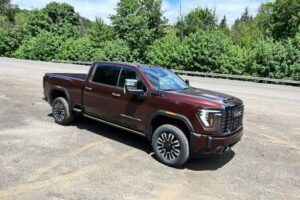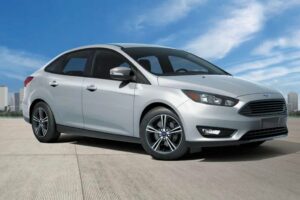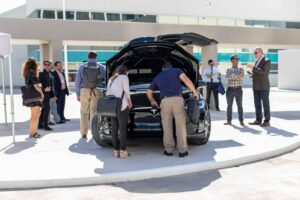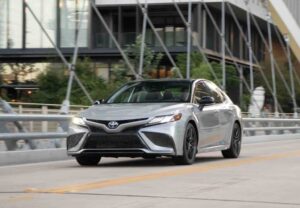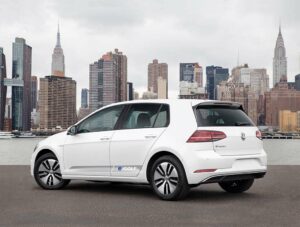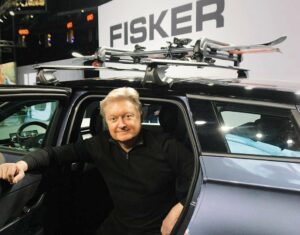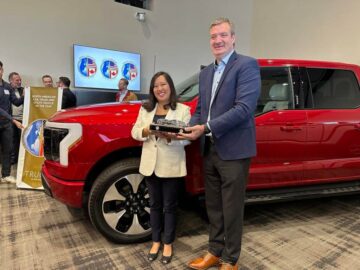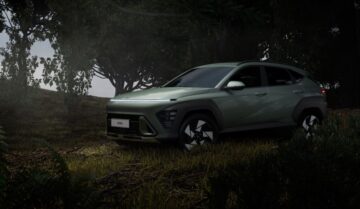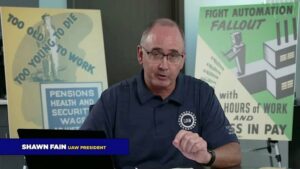
Ricky Lao, Hyundai Motor North America director, Product Planning, has been with the company for 10 years in various roles.
With the debut of the Genesis X Concept last month, as well as the Genesis Electrified G80 at the Shanghai Auto Show, the luxury arm of Hyundai Motor Group sent a series of signals about where it is going with future products.
Helping set that direction is Ricky Lao, the former General Motors and Toyota exec who was named director of product planning for Hyundai Motor North America earlier this year. Lao has held a series of assignments since joining the South Korean carmaker in 2010, all with an eye on helping the automaker move design, engineering and technology forward.
Lao spoke to TheDetroitBureau.com about not only the direction Genesis is taking, but also the underlying forces pushing Hyundai as a company forward.
TheDetroitBureau: I know we’re going to focus on the Genesis brand but you recently received a promotion to head Hyundai’s North American product planning so let’s start there. This is a brand that started out as pretty derivative, at best. The change during the last three decades has been tremendous at every level. What’s behind that?

The Genesis GV70 is just the latest offering from the luxury brand that didn’t exist five years ago.
Ricky Lao: You’ve tapped into the culture (of the company) and also the culture of Korea. It’s the real sense of commitment to the future, a feeling I got when I first joined Hyundai, Even in my time here I’ve seen the acceleration, this unyielding focus on the future, the focus on the product, the focus on the customer and a sense we can always do better. Internally, we call it “Hyundai speed.” Sometimes I step back and just look at where we’ve come in the last five years. You know, we’re still a challenger brand. Just look at Genesis. We’ve been in the (luxury) market for just five years and look at how we’ve evolved.
TDB: A lot of the transition seems to be linked to the arrival of some talented foreigners like Peter Schreyer, the one-time Audi design chief, and Albert Biermann, now Hyundai’s R&D director.
Lao: Schreyer was the first true international executive who completely reshaped (design) at Kia. And you see how that has taken hold.
TDB: Back to the subject of the Korean culture, it fascinates me how distinctively driven the country is. A lot of times people don’t realize how different Asian cultures are, Korea, in particular.
Lao: I almost feel like there’s a perception in Korea that it’s the underdog. And the Korean culture has this unyielding work ethic. You can’t question how hard its people work. You see it when you look beyond Hyundai at how the country has evolved. You see it in the corporations, in the music, in the movies.
TDB: The idea of launching a Korean luxury car would have seemed absurd not that long ago yet here we have Genesis winning North American Car of the Year for the G70 not long ago and landing a runner-up again this year. Now, you’re pushing to even further extremes with the Genesis X coupe concept. Let’s talk about that.
Lao: The Genesis X concept is really the ultimate expression of our “athletic elegance” design language. It give you a kind of blueprint towards our future, both from a design perspective and our future of eco-mobility, the message of a sustainable future. There are technologies, such as the (recycled materials) and the fact that it’s fully electrified. Its audaciousness is part of our DNA but keep on pushing the boundary.
TDB: But why go with a coupe at a time when the market is dominated by SUVs?
Lao: It’s meant to be a design exercise to show you the direction of our future in terms of design execution married with our vision of eco-mobility. As a young entrant, Genesis always explores new opportunities.
TDB: Though this was a fully electrified vehicle Genesis stuck with a more classic coupe design — a long, muscular hood, rather than the short hoods we’re seeing on many all-electric vehicles that move their powertrains under the load floor. Why this approach?
Lao: A good question but, from my perspective, there’s no better way to signal performance than with a long hood, a long dash-to-axle ratio. It gives this impression of performance and capability. There are what you might consider to be traditional elements that are just part of an appealing, beautiful design.
TDB: The reality is that all automakers are going electric. Can you talk about what a true electrified Genesis is going to look like?

Genesis is looking to make up some ground when it comes to electrification with the new Electrified G80 Concept shown at the Shanghai Auto Show.
Lao: Electrification is, obviously, the directional future. We’ve already talked about Hyundai’s new E-GMP platform architecture which will be capable of doing ultra-fast charging. And there is inherent performance within that architecture. (Hyundai Motor Group) has also been at the forefront of fuel-cell technology. So, we’re also looking at that as part of our electrification strategy.
TDB: Electric powertrains do seem to open up a new world because of the way you move the key components, the batteries and motors under the floorboards. Let’s talk about what that gives designers, and you, as a product planner.
Lao: It’s like a freedom and a constraint at the same time. Our philosophy is always to start with what the target customer is looking for, what are their priorities. With the E-GMP architecture we have a lot of possibilities. The challenge is addressing key issues, like charging. This is such a fast-moving sector that there’s still a lot of development work (needed) and avenues we are exploring.
TDB: Before we wrap up, let’s step inside. When we talk about new technology, there’s a lot going on inside the cabin, starting with all those new screens, like we saw with the Genesis X. How important will it be to get all this technology and the overall interior done right?
Lao: The interior is a focal point because you spend so much time inside your vehicle. It’s a kind of hub and home. From that perspective, it’s about using technologies to make your life easier, offloading some of the load that you face as a driver while preventing distraction. Voice technology helps. And you need to have an intuitive design layout where things are placed in the right spot of yours to quickly reach.
Then, as we move towards semi-autonomous, and even a fully autonomous world, it opens up some ideas about flexibility within the interior space, with your vehicle able to become a rolling hub of a workstation. How to make the interior more flexible is something we’re talking about.
But you have to create an interior that’s a beautiful design as well as really usable. The new Genesis GV70 (SUV) is a perfect example, aesthetically beautiful. Great layout, and really forward thinking with backlit trims you haven’t seen before.
TDB: Yet, there is still a desire by the customer for some traditional luxury cues.
Lao: We have to retain elements of traditional luxury. You’re still going to have many people that want leather and wood and all the other stuff. But we can move to using renewable, sustainable materials, to a different type of balance than today. There is an evolution of consumers demanding more eco-friendly choices, and I think we’re going to be answering that call with our future vehicles.
- Absolute
- all-electric
- all-electric vehicles
- america
- American
- architecture
- ARM
- audi
- auto
- automakers
- automotive
- autonomous
- batteries
- BEST
- border
- call
- car
- challenge
- change
- charging
- chief
- company
- Consumers
- Corporations
- Culture
- Customers
- Design
- Development
- Director
- dna
- driven
- driver
- Electric
- Engineering
- EV
- evolution
- execution
- executive
- Exercise
- eye
- Face
- First
- Flexibility
- Focus
- Forward
- Freedom
- future
- General
- General Motors
- Genesis
- gif
- good
- great
- Group
- head
- here
- hold
- Home
- How
- How To
- HTTPS
- Hyundai
- idea
- International
- issues
- IT
- Key
- Kia
- korea
- Korean
- language
- latest
- lead
- Level
- light
- load
- Long
- Market
- materials
- move
- Movies
- Music
- North
- north america
- offering
- open
- opens
- Other
- People
- performance
- perspective
- philosophy
- planning
- platform
- plugin
- preventing
- Product
- Products
- promotion
- punch
- R&D
- Reality
- Screen
- sense
- Series
- set
- shanghai
- Short
- So
- South
- Space
- speed
- spend
- Spot
- start
- started
- Strategy
- sustainable
- SUVs
- talking
- Target
- Technologies
- Technology
- The Future
- Thinking
- time
- top
- toyota
- utility
- vehicle
- Vehicles
- Video
- vision
- Voice
- voice technology
- WHO
- within
- WordPress
- Work
- world
- X
- year
- years




